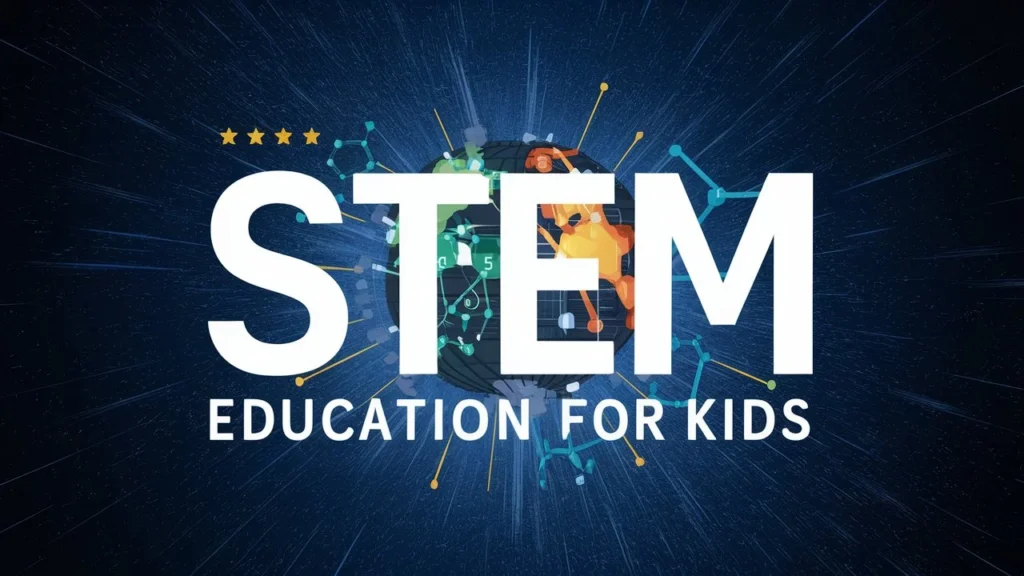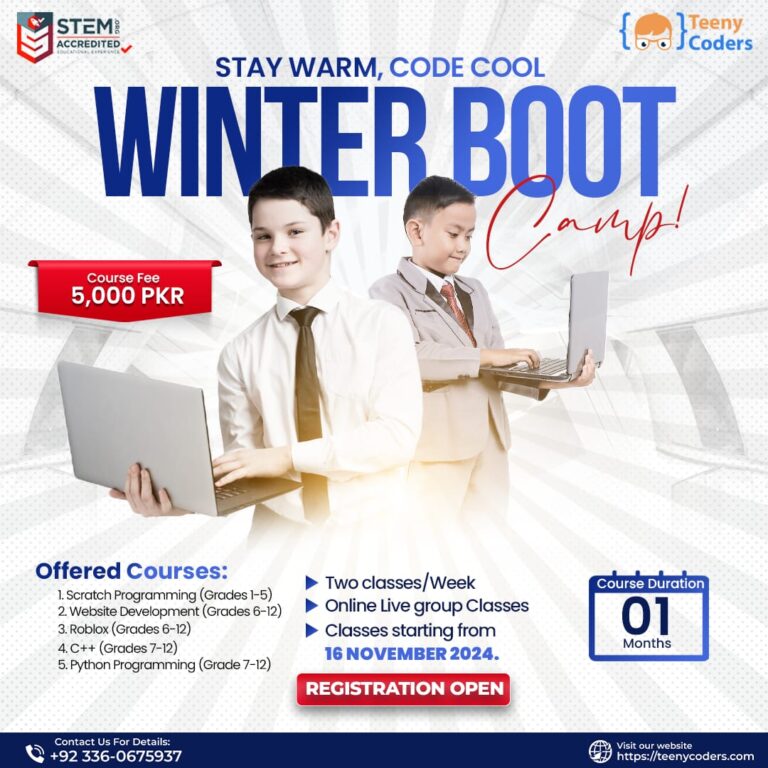In today’s rapidly evolving world, STEM education (Science, Technology, Engineering, and Mathematics) is no longer a niche concept – it’s a fundamental building block for future success. By nurturing a passion for STEM in kids, we equip them with the critical thinking, problem-solving, and innovation skills necessary to thrive in the 21st century. STEM education for kids, exploring its benefits, various learning approaches, and valuable resources to ignite young minds.
Why STEM Education Matters for Kids: Cultivating the Skills of Tomorrow
Here are some compelling reasons to integrate STEM education into a child’s learning journey:
- Developing Critical Thinking and Problem-Solving Skills: STEM activities encourage kids to ask questions, analyse situations, and devise creative solutions. This fosters critical thinking skills that are applicable not only in STEM fields but also in various aspects of life.
- Enhancing Creativity and Innovation: STEM education allows kids to experiment, explore different approaches, and build things from scratch. This fosters a spirit of innovation and creativity, essential skills for navigating the ever-changing world.
- Building Confidence and Self-Esteem: Successfully completing STEM challenges and projects instills a sense of accomplishment and boosts a child’s confidence. This can motivate them to tackle new challenges and persevere through difficulties.
- Nurturing Collaboration and Teamwork: Many STEM activities involve teamwork, requiring kids to communicate effectively, collaborate with peers, and share ideas. This fosters valuable teamwork and communication skills.
- Preparing for Future Careers: STEM fields are projected to experience significant growth in the coming years. By exposing kids to STEM concepts early on, we spark their interest and prepare them for potential future careers in these dynamic fields.
- Making Learning Fun and Engaging: STEM education can be an exciting and engaging way to learn. Hands-on activities, experiments, and projects make learning enjoyable and stimulate a child’s natural curiosity.
Beyond Textbooks: Exploring Engaging Approaches to STEM Education for Kids
- Hands-on Activities and Experiments: Learning by doing is a cornerstone of STEM education. Encourage kids to conduct experiments, build models, and participate in interactive activities that bring concepts to life.
- Project-Based Learning: Challenge kids with real-world STEM-based projects. This allows them to apply their knowledge and skills to solve problems in a practical way.
- Gamification: Incorporate educational games and apps that make learning STEM concepts fun and engaging. Many games integrate challenges, problem-solving elements, and storytelling to make learning interactive.
- Coding and Robotics: Introduce kids to the world of coding and robotics. This allows them to develop computational thinking skills, learn problem-solving through code, and understand how robots operate.
- Field Trips and Guest Speakers: Organize field trips to science centers, museums, or technology companies. Inviting guest speakers working in STEM fields can provide insights into career opportunities and real-world applications of STEM concepts.
- Outdoor Exploration: Nature can be a valuable STEM classroom. Take kids on hikes, explore local parks, or organize stargazing activities to connect science concepts with the natural world.
Parents and Educators: Resources to Facilitate Engaging STEM Learning
- Online Resources: Numerous websites, educational apps, and online platforms offer interactive STEM activities, experiments, and learning modules for kids of all ages. Explore websites like Khan Academy Kids, CodeCombat, and NASA Kids’ Club.
- STEM Kits and Toys: STEM kits and educational toys provide hands-on learning experiences. These kits often come with materials and instructions for building robots, conducting experiments, or exploring scientific concepts.
- After-School Programs and Summer Camps: Many after-school programs and summer camps focus specifically on STEM education. These programs offer structured learning environments where kids can explore different STEM fields with qualified instructors.
- Books and Magazines: Encourage a love for reading by providing books and magazines focused on science, technology, engineering, and math. Explore publications like National Geographic Kids, Ranger Rick Jr., and Cobblestone.
- Community Resources: Libraries, museums, and science centers often offer STEM-related workshops, events, and programs for children. These resources can provide valuable learning experiences and spark curiosity.
Beyond the Basics: Fostering a Growth Mindset in STEM Education
- Celebrate Effort and Process: Emphasize the importance of effort, perseverance, and the learning process over simply achieving the perfect outcome. This encourages kids to view challenges as opportunities to learn and grow.
- Embrace Mistakes as Learning Opportunities: Mistakes are inevitable in STEM exploration. Encourage your child to view them as learning experiences and opportunities to refine their approach.
- Focus on Progress, Not Perfection: Learning is a journey, not a destination. Focus on the progress your child makes in understanding concepts and conquering challenges rather than striving for immediate perfection.
- Model a Growth Mindset: Children learn by observing adults. Demonstrate a growth mindset yourself by embracing challenges and learning new things. Talk openly about your own mistakes and learning experiences.
- Provide Positive Reinforcement: Offer encouragement and praise your child’s effort, creativity, and problem-solving skills during their STEM exploration. This positive reinforcement builds confidence and motivates them to continue learning.
Building a Supportive Network: Encouraging Collaboration and Mentorship
- Encourage Collaboration: STEM activities are often more engaging and rewarding when done collaboratively. Create opportunities for kids to work together on projects, share ideas, and learn from each other.
- Connect with STEM Professionals: Seek out opportunities for your child to connect with professionals working in STEM fields. Mentorship programs can provide valuable guidance and insights into real-world applications of STEM concepts.
- Join Online Communities: Several online communities cater to kids interested in STEM. These platforms allow kids to connect with peers who share their passion, ask questions, and participate in discussions.
Conclusion: Nurturing the Next Generation of Innovators
By integrating STEM education into a child’s life, we are not just preparing them for potential careers in these fields, but fostering well-rounded individuals with the critical thinking, problem-solving, and collaborative skills necessary to thrive in an ever-evolving world. By embracing engaging learning approaches, utilizing valuable resources, and fostering a growth mindset, we can ignite a passion for STEM in kids, empowering them to become the next generation of innovators and leaders.


